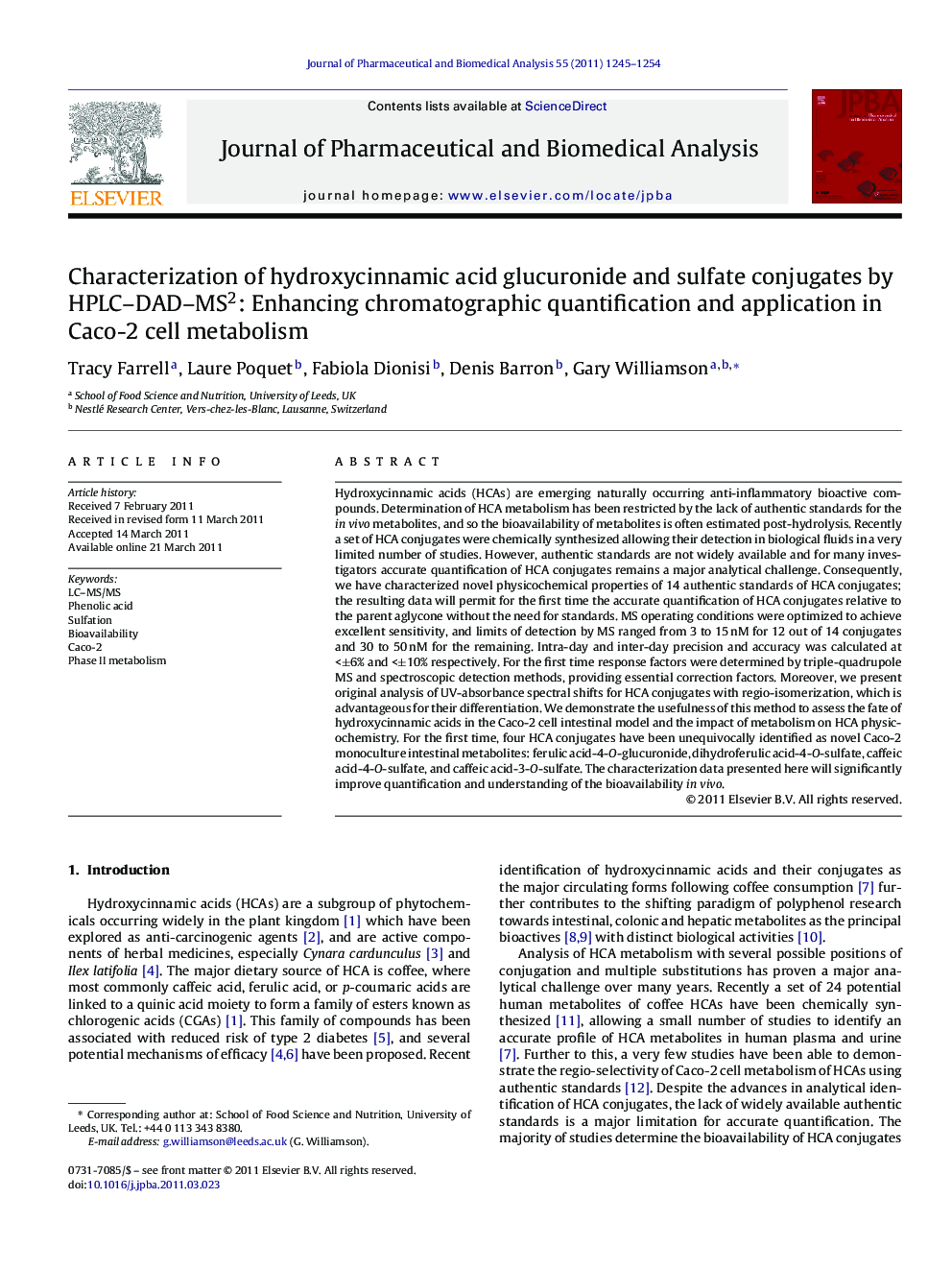| Article ID | Journal | Published Year | Pages | File Type |
|---|---|---|---|---|
| 1222750 | Journal of Pharmaceutical and Biomedical Analysis | 2011 | 10 Pages |
Hydroxycinnamic acids (HCAs) are emerging naturally occurring anti-inflammatory bioactive compounds. Determination of HCA metabolism has been restricted by the lack of authentic standards for the in vivo metabolites, and so the bioavailability of metabolites is often estimated post-hydrolysis. Recently a set of HCA conjugates were chemically synthesized allowing their detection in biological fluids in a very limited number of studies. However, authentic standards are not widely available and for many investigators accurate quantification of HCA conjugates remains a major analytical challenge. Consequently, we have characterized novel physicochemical properties of 14 authentic standards of HCA conjugates; the resulting data will permit for the first time the accurate quantification of HCA conjugates relative to the parent aglycone without the need for standards. MS operating conditions were optimized to achieve excellent sensitivity, and limits of detection by MS ranged from 3 to 15 nM for 12 out of 14 conjugates and 30 to 50 nM for the remaining. Intra-day and inter-day precision and accuracy was calculated at <±6% and <±10% respectively. For the first time response factors were determined by triple-quadrupole MS and spectroscopic detection methods, providing essential correction factors. Moreover, we present original analysis of UV-absorbance spectral shifts for HCA conjugates with regio-isomerization, which is advantageous for their differentiation. We demonstrate the usefulness of this method to assess the fate of hydroxycinnamic acids in the Caco-2 cell intestinal model and the impact of metabolism on HCA physicochemistry. For the first time, four HCA conjugates have been unequivocally identified as novel Caco-2 monoculture intestinal metabolites: ferulic acid-4-O-glucuronide, dihydroferulic acid-4-O-sulfate, caffeic acid-4-O-sulfate, and caffeic acid-3-O-sulfate. The characterization data presented here will significantly improve quantification and understanding of the bioavailability in vivo.
